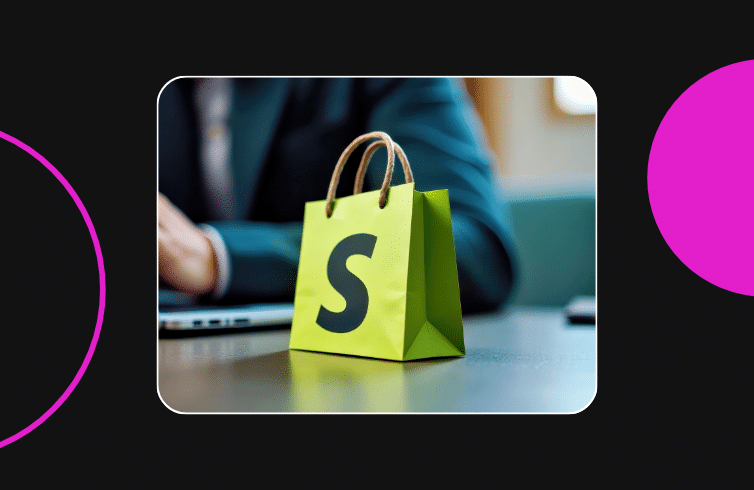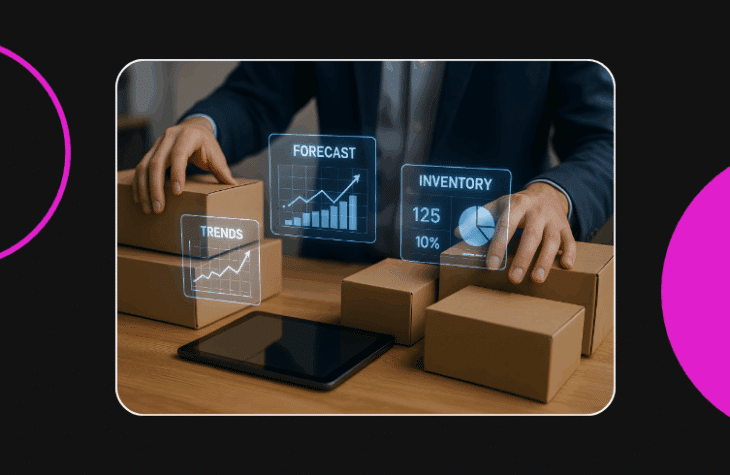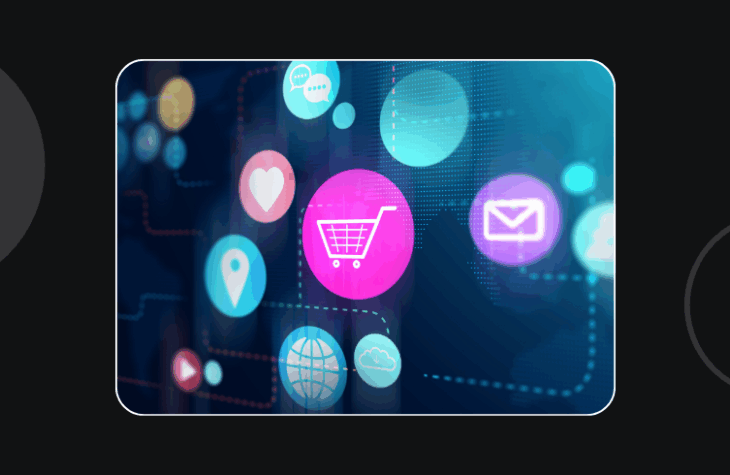Boost Performance and Flexibility With Headless E-commerce in Shopify

Headless e-commerce separates Shopify’s storefront from backend, enabling faster performance, design flexibility, and omnichannel capabilities through Storefront API, Hydrogen, and frameworks like Next.js
Using a headless CMS solves pain points like performance bottlenecks, rigid templates, and limited integration, while supporting seamless backend connections (OMS, PIM, CMS).
Another benefit of headless architecture is that it unlocks faster load times, creative freedom, and omnichannel readiness using Storefront API, Hydrogen/Oxygen, and modern frameworks.
You’ve built your business with Shopify and loved how easy it is. Yet at times, Shopify’s templated themes make you feel boxed in, or your site’s speed, flexibility, and customization needs are holding you back.
Shopify is one of the most reliable commerce platforms—versatile and developer-friendly—but specific high-performance, omnichannel use cases demand something more advanced.
A headless e-commerce offers a modern, scalable architecture that lets you keep Shopify’s commerce engine while unlocking complete creative control and lightning-fast frontend performance.
60% of the major retailers in the U.S. are expected to adopt headless platforms by 2025, indicating that they’re becoming a stepping stone for brands scaling in speed, customization, and seamless customer experience.
In this article, we’ll explore how Shopify supports headless setups, its benefits, when it’s worth the investment, and the essential tools that power a successful headless stack.
What is headless e-commerce?
Think of your online store as a theater production. The audience sees the front end on stage—the set design, lighting, and actors. The back end is all the backstage work—scripts, stagehands, props, and sound systems that keep the show running.
In traditional e-commerce, the stage and backstage are tightly locked together. With headless e-commerce, the stage can change independently from the backstage, which is connected by APIs.
This headless structure allows you to redesign the UI without re-engineering the entire e-commerce structure.
The separation between the stage (frontend) and the backstage (backend) opens up a wide range of advantages that traditional setups can’t easily deliver:
- Performance boost: By using modern frontend frameworks, pages load faster, improving both SEO and customer satisfaction.
- Complete creative control: You’re no longer limited by rigid templates; you can design unique storefronts that perfectly match your brand.
- Omnichannel readiness: The same backend powers multiple experiences, from websites and mobile apps to kiosks and even voice assistants.
- Flexibility to adapt: You can add new tools, features, or channels without disrupting your entire commerce engine.
How headless works with Shopify
Shopify supports headless e-commerce in such a way that it allows you to skip the replatforming process. Instead of starting over, you can extend your Shopify’s strengths with API-led flexibility that works alongside what you’ve already built.
Storefront API
- Shopify’s Storefront API is a GraphQL-based endpoint that allows your frontend—whether that’s a web app, mobile app, kiosk, or custom UI—to fetch products, collections, carts, and customer data directly from Shopify’s backend.
- You get the full power of Shopify’s commerce engine, delivered to any frontend experience you design.
Shopify’s built-in React stack: Hydrogen + Oxygen
- Hydrogen is Shopify’s React-based framework explicitly designed for headless storefronts. It offers commerce-first components, hooks, and tooling—optimizing performance, routing, and integration with the Storefront API.
- Oxygen is Shopify’s global, edge-based hosting platform for Hydrogen apps. It handles caching, deployment pipelines, and CDN delivery—so your custom frontend runs fast and reliably.
Preferred frontend framework
- You don’t have to use Hydrogen if you prefer something else. Shopify’s Storefront API also works seamlessly with Next.js, Nuxt, and Gatsby.
- This allows your developers to choose the tools they’re comfortable with, without losing access to Shopify’s backend commerce logic.
By going headless, you’re not discarding Shopify; instead, you’re simply detaching the storefront and restructuring it on modern tools, while still relying on Shopify’s commerce backend, connected through APIs.
Benefits of going headless in Shopify
Separating the storefront from the backend unlocks a suite of practical, performance-driven benefits, such as:
- Performance boost: Frontends built with modern frameworks (like React and Next.js) load significantly faster, improving SEO and user satisfaction.
- Complete creative control: You’re no longer limited by Liquid theme constraints—design your layout and interactive features.
- Better mobile experiences: Create responsive, touch-first experiences without compromise, helping capture today’s mobile-first audience.
- Omnichannel readiness: One backend can serve your website, app, kiosks, and even emerging touchpoints, creating a seamless customer experience.
- Seamless backend integrations: Easily plug in OMS, PIM, CMS, ERP, and other services without disrupting your frontend or underlying logic.
A survey shows that 79% of businesses see headless as key to scaling their operations, and 82% say that it helps them deliver a consistent experience across every channel. This highlights why headless isn’t just about tech flexibility; it’s about building a foundation that supports growth and customer experience at scale.
When headless doesn’t make sense (and when it does)
Headless e-commerce offers incredible flexibility, but it’s not always the right choice for every retailer. Like any technology shift, it comes with trade-offs that must be considered before you make the leap.
- Technical complexity: Decoupling the frontend from the backend means managing multiple systems instead of one, which requires additional technical know-how.
- Higher upfront development cost: Building and integrating a custom frontend with Shopify’s backend can be more expensive than relying on Shopify’s native themes.
- Need for a dev team: To fully take advantage of headless, you’ll need in-house developers or a partner agency with experience in frameworks like React or Next.js.
On the other hand, there are plenty of different scenarios where going headless can pay off:
- Complete control over UX: If you’re ready to create highly customized, differentiated experiences that stand out in the competitive markets.
- Priority to performance and SEO: Faster sites rank higher and convert more, which makes headless especially valuable for traffic-heavy operations.
- Omnichannel or international operations: When you need consistent experiences across geographies, devices, and channels, headless ensures scalability and flexibility.
Key tools and components in a headless Shopify stack
A successful headless Shopify setup is built on four core pillars, each one powering a fast, flexible, and personalized commerce experience:
Frontend frameworks
- Hydrogen (React-based): This is Shopify’s toolkit for headless storefronts. It offers built-in commerce components, hooks, server-side rendering, and tight integration with the Storefront API.
- Alternative frameworks: Next.js, Vue.js, Nuxt, Gatsby—you can use whichever your team prefers, while still tapping into Shopify’s backend.
Headless CMS
- Popular choices include Sanity, Contentful, Storyblok, or ButterCMS, which let marketing and content teams build and manage pages without touching code.
- These CMS (content management systems) platforms plug into your frontend via APIs, so content remains flexible and decoupled from store and backend operations.
Backend systems
- Shopify’s Storefront API: The GraphQL API serves as the bridge between the front end and the back end, delivering product, customer, and order data securely and in real time.
- OMS: An advanced tool like fabric’s agentic commerce platform can orchestrate inventory, fulfillment rules, and backend routing—making your headless setup scalable and commerce-efficient.
- PIM: A product information system works alongside your CMS and Shopify to ensure unified, accurate product data across channels.
Hosting and CDN
- Vercel or Netify: Popular choices for deploying frontend apps globally, with lightning-fast CDN delivery and zero-config builds.
- Oxygen: Shopify’s own edge hosting for Hydrogen storefronts—bundling hosting, caching, and CDNs for optimized performance.
This is how these different tools work together to deliver better, faster, and personalized experiences:
- Design and build your frontend using Hydrogen or another framework—this allows you to personalize the customer-facing layer.
- It fetches product and order data via the Storefront API, staying in sync with your Shopify store.
- Content blocks in a headless CMS enrich pages with dynamic and brand-led storytelling.
- Transactional logic—routing orders, managing inventory, or running fulfillment—runs through your OMS and data layer.
- Everything is deployed and delivered over CDNs or edge hosting, ensuring fast and global reach.
Build for the future, not the workaround
Adopting a headless e-commerce isn’t a mandatory requirement for your Shopify store, but it is one of the most future-ready approaches to order management when speed, user experience, and scalability are at the top of your growth agenda.
Instead of relying on workarounds to patch performance or design limitations, headless gives you a foundation that can evolve as your customers, markets, and channels evolve.
Now, the real question isn’t “whether headless is right for every business today”—it’s whether your growth goals align with the flexibility and power it provides.
If you’re scaling your brand across channels, regions, or customer experiences, investing in a headless Shopify setup, backed by the right tools like a robust OMS and a flexible API-first stack, can help you move beyond limitations and build an architecture ready for the future.
Contact us today to request a demo and discover how a headless structure can benefit your Shopify store.

Digital content editorial team @ fabric




